
‘Beverly’ Eleganza rose was named Most Fragrant and Best Hybrid Tea at 2013 international rose trials.
Roses are popular shrubs in Pacific Northwest gardens, despite the challenges of growing them in our damp climate. If you would like to increase your success with roses, check out our blog posts on Tips for growing roses in western Washington and Choosing and growing roses in western Washington. They are among our most popular posts.
We were delighted to find an excellent book, Growing Roses in the Pacific Northwest, by Nita-Jo Rountree, with lots of tips and tidbits about roses. It includes a chapter on the anatomy of a rose, detailed information on diseases and pests, and even rose history.
For example, did you know that:
- Roses have been in existence for thirty-five million years in the Pacific Northwest.
- Empress Joséphine de Beuharnais (married to Napoleon Bonaparte) and her horticulturist, André Dupont, created 250 rose cultivars.
- The oldest living rose plant in the world is the Thousand-Year Rose, grown on the wall of the Hildesheim Cathedral in Hildesheim, German. Documentation verifies that the rose is about seven hundred years old.
Best roses to grow in the Pacific Northwest
What excited us most about the book is detailed information about the best roses to grow in our local climate conditions, a total of 90 different varieties. This long section, divided into categories, includes large photos of all the varieties recommended. If you are a rose enthusiast, it is well worth buying the the book for the recommendations and accompanying photos.
Hybrid tea
Long considered the fussiest roses to grow, in recent years hybridizers have bred new easy-care varieties. Rountree recommends 16 hybrid tea roses. Here is one, with another above.

‘Francis Meilland’ was the only rose designated an All-America Rose Selection by the American Rose Society in 2013 and the first hybrid tea to be chosen under the new no-spray rules.
Floribunda
Floribunda roses were created by crossing a hybrid tea with a polyantha. They bloom almost continuously. Rountree recommends 16 varieties; here is one.
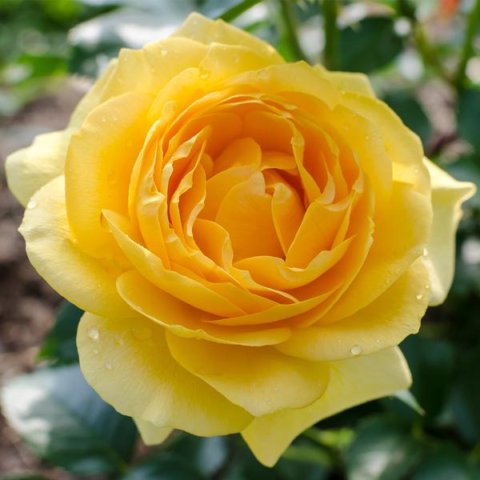
‘Julia Child’ floribunda rose. When Julia Child saw this rose, she requested it be named after her because she thought it looked like the color of fresh cream butter.
Grandiflora
Grandiflora roses are a cross between a hybrid tea and a floribunda. They are repeat blooming and grow taller than floribundas. Rountree recommends five varieties; here is one.
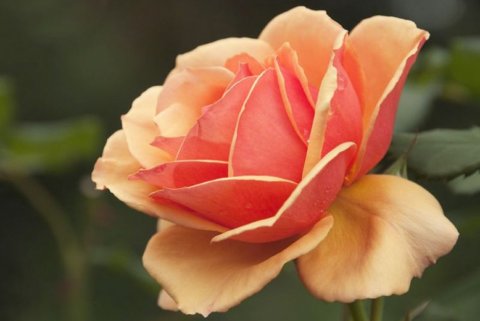
‘Anna’s Promise’ Downton Abbey grandiflora rose is the first rose in Weeks Roses’ Downton Abbey rose collection.
Shrub, landscape and hybrid musk
Shrub roses are becoming the most popular type of rose due to their nonstop blooming and extreme disease resistance. Hybrid musk roses also have outstanding disease resistance and are tolerant of filtered shade. Landscape roses tend to grow more horizontally than vertically, so work well as hedges. The book recommends 22 roses in this combined category; here are two.
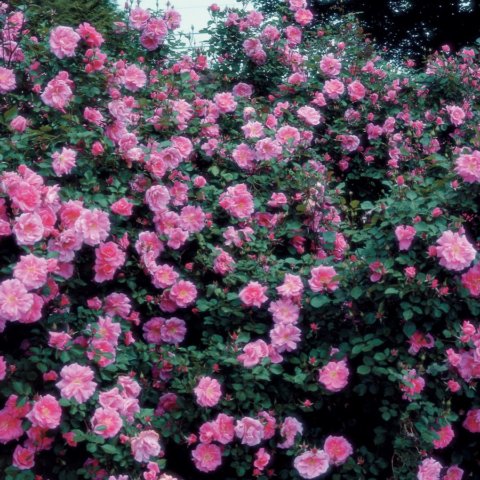
‘Carefree Beauty’ Earth-Kind rose. “Earth-Kind” designates roses that grow vigorously without fertilizers or pesticides and with significantly less irrigation.
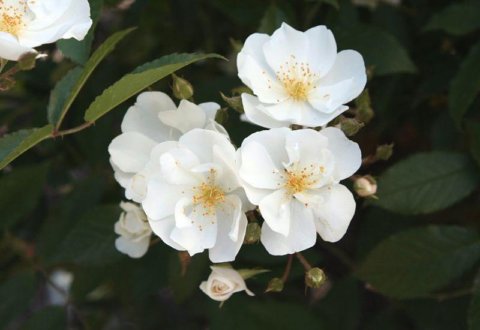
If you think you can’t grow roses, try ‘Darlow’s Enigma.’ This rambling bush is vigorous, large and disease resistant.
Ground cover
Ground-cover roses were developed mainly for mass planting. They fill the consumer desire for disease- and pest-resistant roses that are also drought and shade tolerant. Rountree recommends three: ‘Flower Carpet Amber,’ ‘Flower Carpet Pink’ and ‘Sweet Drift.’
Climbing and rambling
Roses throw out very long, flexible canes, which can be trained along a support. The book recommends 12 roses in this category; here is one.

‘Westerland’ is one of Rountree’s favorite roses. It blooms freely, has a strong, spicy fragrance and is highly disease resistant.
David Austin or English
David Austin of Shropshire, England, crossed old garden roses with modern hybrid teas and floribundas. There are hundreds of varieties of David Austin roses. During the last 12 years, disease resistance has moved to the forefront of Austin’s breeding efforts. Rountree recommends four varieties that have much improved disease resistance; here is one.

‘Olivia Rose Austin’ was one of the first cultivars to be released from David Austin’s new breeding program of disease-free lines. The company claims it may be the best rose it has introduced to date.
Species and hybrid species
Sometimes referred to as “wild roses,” species roses predate humans by thousands of millennia, existing without human cultivation, according to Rountree. Rosa rugosa is the best known and most frequently grown species rose because of its superior hardiness. The other species in the category are not typically grown in home gardens because they are large and are not repeat bloomers.
Rugosa and hybrid rugosa
Rugosa roses have a wide-spreading bushy habit, are completely disease free and are tolerant of a wide range of growing conditions. Rountree recommends two.
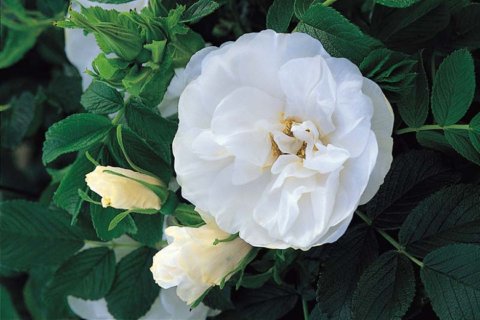
‘Blanc Double de Coubert’ is a hybrid rugosa, introduced in 1892.
Old garden
Old garden roses were the first roses to be cultivated. There are many classes and subclasses. They are also called “heritage,” “antique,” “old-fashioned” and “historic” roses. The book recommends six examples of old garden roses that were cultivated before 1867 and that perform well in the Pacific Northwest; here is one.
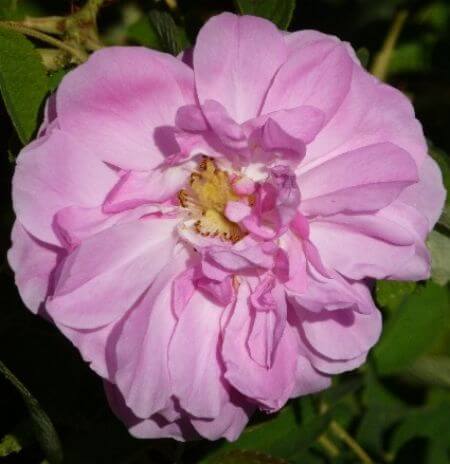
‘Autumn Damask’ is also called ‘Rose des Quatre Saisons.’ It dates back to the Roman Empire or even earlier.

What are some roses suitable for the Pacific Northwest that have sturdy stems which will support the roses even when wet from rain? Also I’m looking for disease resistence and floriferousness (repeat blooming).
Thanks,
Laura Stratton
Olympia, WA
Thanks for your question. Roses are notoriously difficult to grow in western Washington. The blog post below recommends an excellent book (Growing Roses in the Pacific Northwest: 90 Best Varieties for Successful Rose Gardening) along with some websites to help you choose the right roses. The post also has tips on growing roses. https://inharmony.com/resources-to-help-you-grow-roses-successfully/
Thanks for reposting!